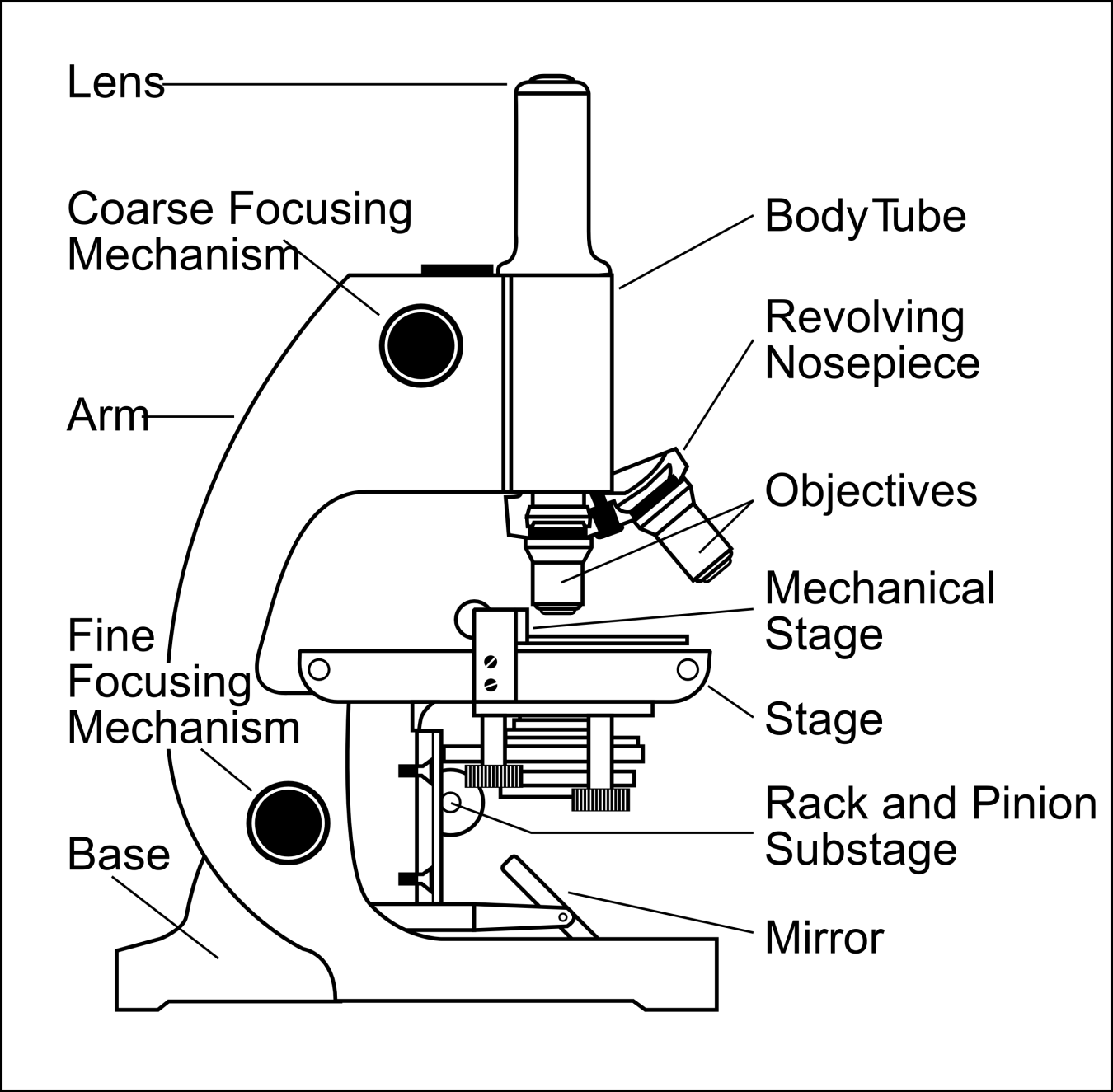
Compound Light Microscope Drawing at GetDrawings Free download
a. Mechanical Parts of a Compound Microscope Foot or Base Pillar Arm Stage Inclination Joint Clips Diaphragm Nose piece/Revolving Nosepiece/Turret Body Tube Adjustment Knobs b. Optical Parts of a Compound Microscope Eyepiece lens or Ocular Mirror Objective Lenses
1.5 Microscopy Biology LibreTexts
The web page titled "Parts of a Microscope with Labeled Diagram and Functions" has the following key takeaways: 🔍 The microscope is an essential tool for scientists, researchers, and medical professionals. 🧬 The main function of a microscope is to provide a magnified view of small objects or organisms, such as bacteria, cells, or tissues.

Cells and Microscopes
Microscope - Types, Diagrams and Functions By Editorial Board October 13, 2022 Microscope - Let's split the name into two parts to understand what it actually means. " Micro " means very small (typically not visible to the naked eye) and " scope " means to assess or investigate carefully.
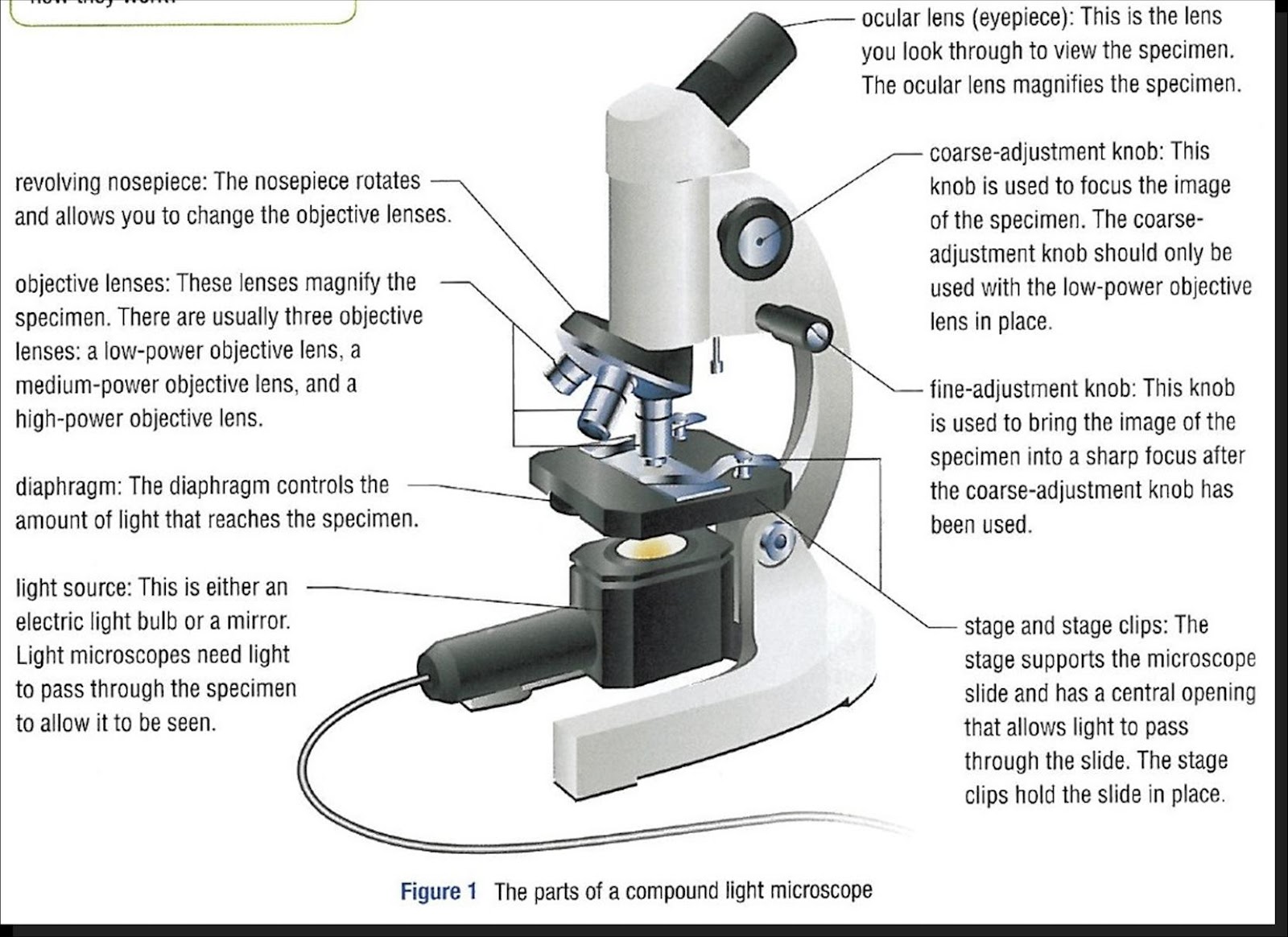
Parts Parts And Functions Of A Microscope
Simple microscope is a magnification apparatus that uses a combination of double convex lens to form an enlarged, erect image of a specimen. The working principle of a simple microscope is that when a lens is held close to the eye, a virtual, magnified and erect image of a specimen is formed at the least possible distance from which a human eye.

Parts of a Microscope The Comprehensive Guide Microscope and Laboratory Equipment Reviews
The hand magnifying glass can magnify about 3 to 20×. Single-lensed simple microscopes can magnify up to 300×—and are capable of revealing bacteria —while compound microscopes can magnify up to 2,000×. A simple microscope can resolve below 1 micrometre (μm; one millionth of a metre); a compound microscope can resolve down to about 0.2 μm.

301 Moved Permanently
See: Labeled Diagram showing differences between compound and simple microscope parts. Structural Components. The three structural components include. 1. Head. This is the upper part of the microscope that houses the optical parts. 2. Arm . This part connects the head with the base and provides stability to the microscope.
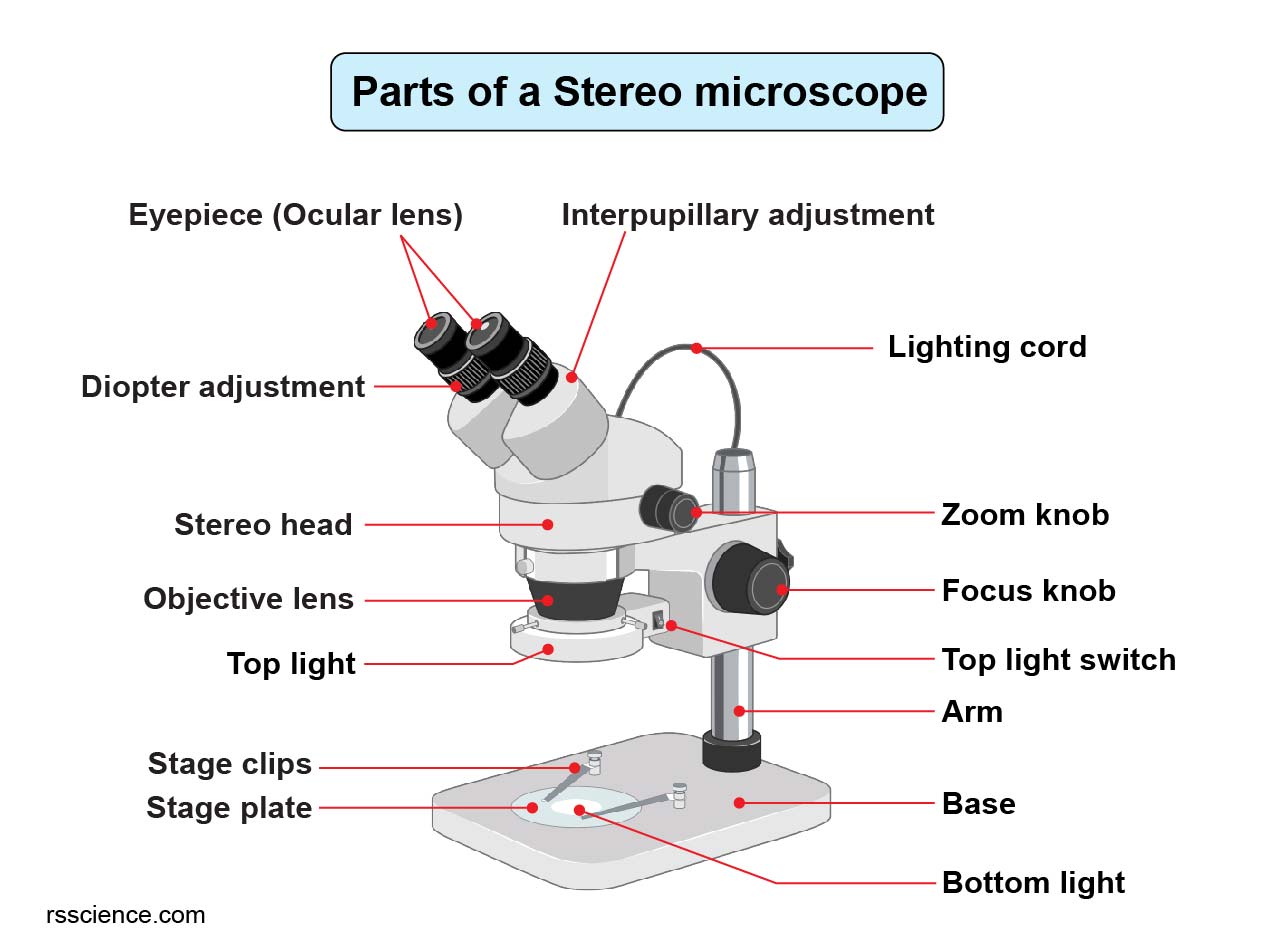
Parts of Stereo Microscope (Dissecting microscope) labeled diagram, functions, and how to use it
A Study of the Microscope and its Functions With a Labeled Diagram - Science Struck A Study of the Microscope and its Functions With a Labeled Diagram To better understand the structure and function of a microscope, we need to take a look at the labeled microscope diagrams of the compound and electron microscope.

Microscope Diagram Tim's Printables
Magnification is a measure of how much larger a microscope (or set of lenses within a microscope) causes an object to appear. For instance, the light microscopes typically used in high schools and colleges magnify up to about 400 times actual size. So, something that was 1 mm wide in real life would be 400 mm wide in the microscope image.
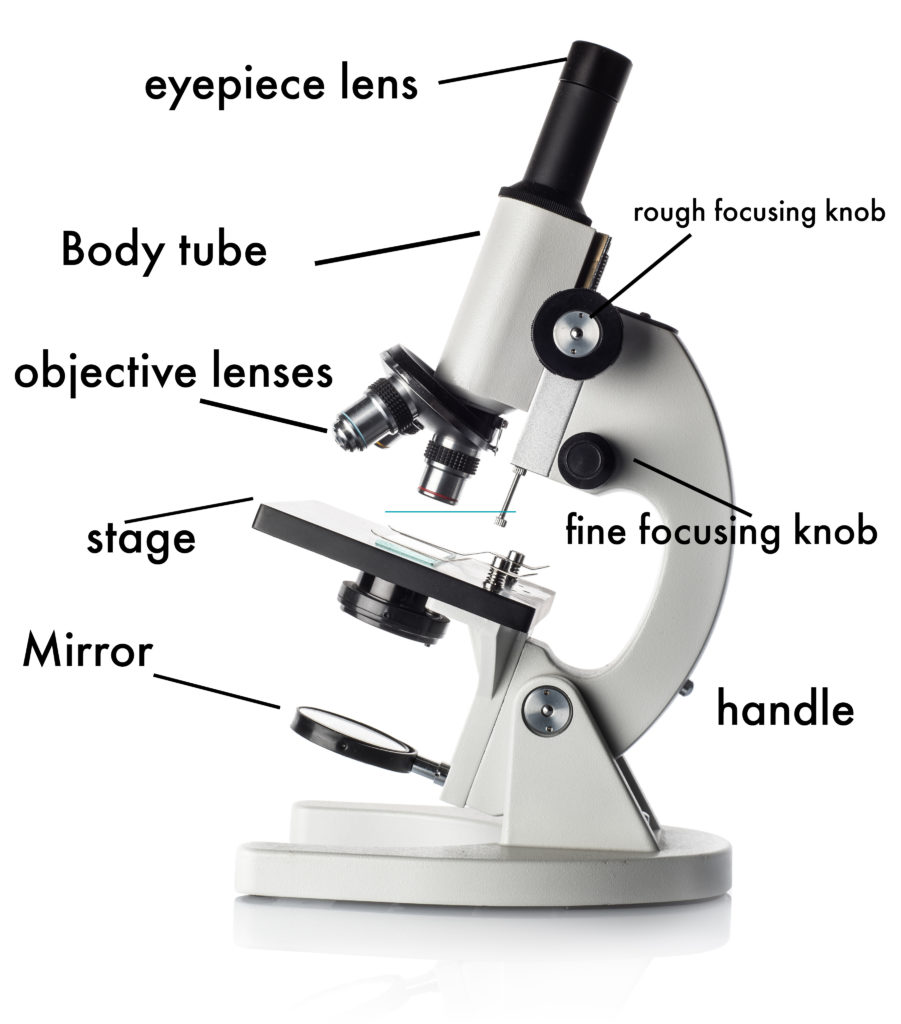
How to Use a Microscope
Tube: Connects the eyepiece to the objective lenses. Arm: Supports the tube and connects it to the base. Base: The bottom of the microscope, used for support. Illuminator: A steady light source (110 volts) used in place of a mirror. If your microscope has a mirror, it is used to reflect light from an external light source up through the bottom.
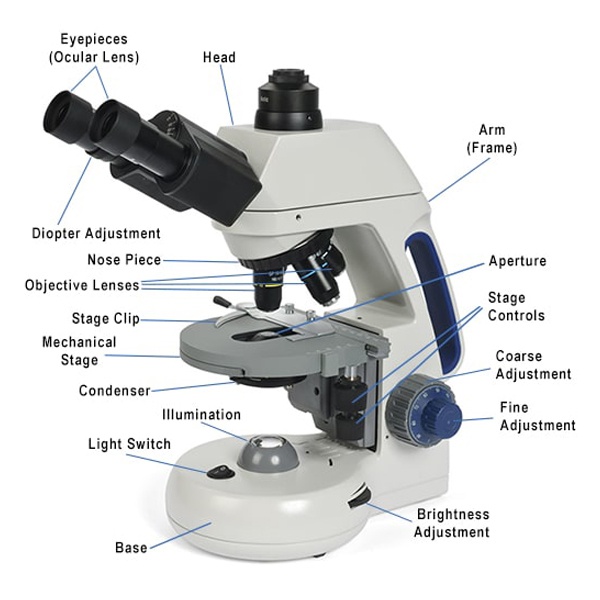
What is a Compound Microscope? New York Microscope Company
The optical microscope often referred to as the light microscope, is a type of microscope that uses visible light and a system of lenses to magnify images of small subjects. There are two basic types of optical microscopes: Simple microscopes. Compound microscopes. The term "compound" in compound microscopes refers to the microscope having.

5 Types of Microscopes with Definitions, Principle, Uses, Labeled Diagrams
1. Eyepiece 2. Body tube/Head 3. Turret/Nose piece 4. Objective lenses 5. Knobs (fine and coarse) 6. Stage and stage clips 7. Aperture 9. Condenser 10. Condenser focus knob 11. Iris diaphragm 12. Diopter adjustment 13. Arm 14. Specimen/slide 15. Stage control/stage height adjustment 16. On and off switch 17. Base

The Microscope Its Parts and Their Functions Microscope, Biology lesson plans, Biology lessons
Fluorescence microscopes: These use fluorescent dyes to highlight specific structures or molecules in a sample and are commonly used in biological research. X-ray microscopes: These use X-rays to produce images of the internal structure of samples and are often used to study materials and biological specimens.
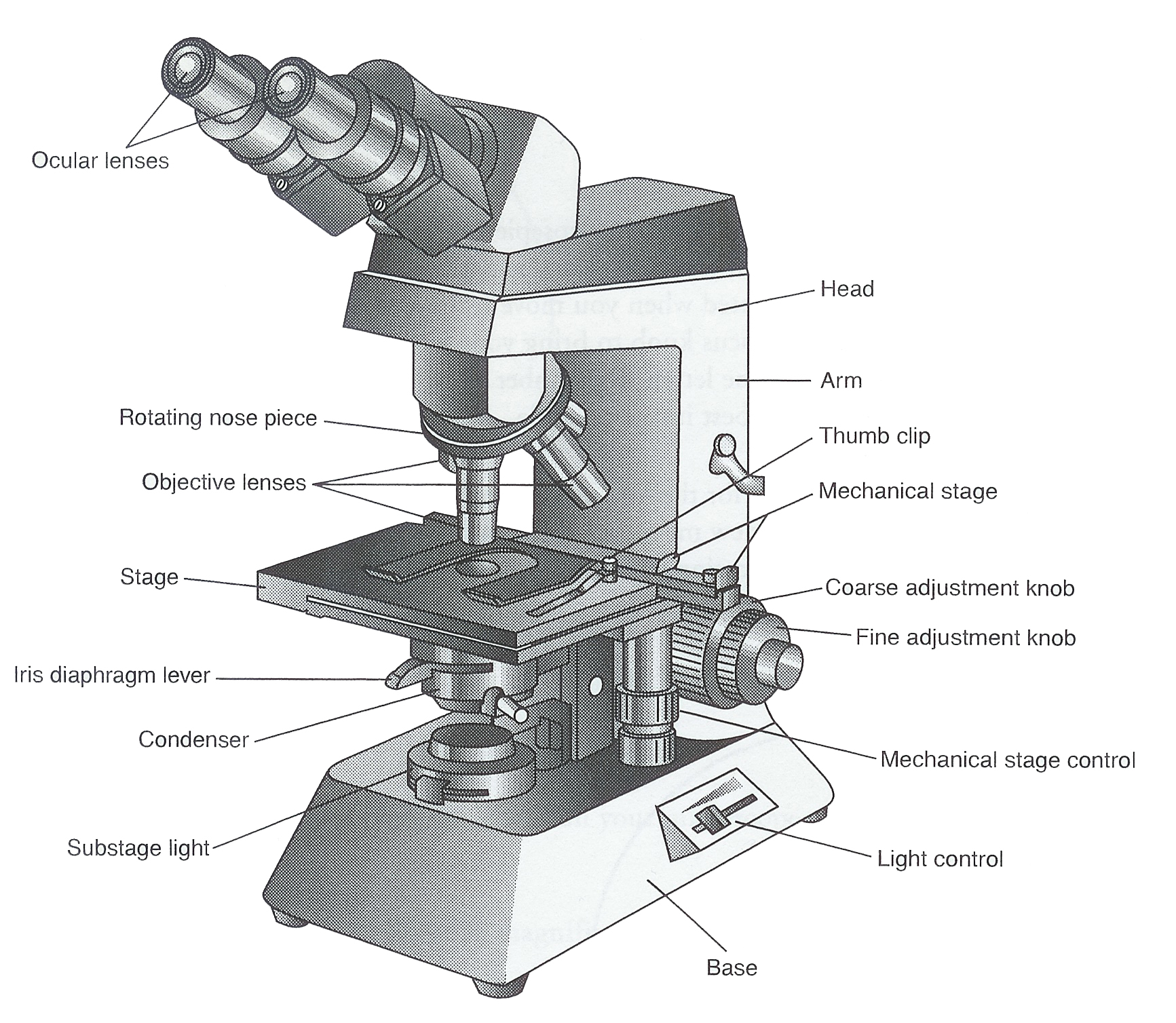
Microscope Labelled Diagram Gcse Micropedia Gambaran
Compound Microscope Parts - Labeled Diagram and their Functions Microscopes / By Rachael Sharing is caring! This article will review the structure of a compound microscope and explain to you how each part works to give us the magnification images. This article covers An overview of microscopes What is a "compound microscope"?

Monday September 25 Parts of a Compound Light Microscope
Figure: Diagram of parts of a microscope. There are three structural parts of the microscope i.e. head, arm, and base. Head - The head is a cylindrical metallic tube that holds the eyepiece lens at one end and connects to the nose piece at other end. It is also called a body tube or eyepiece tube.
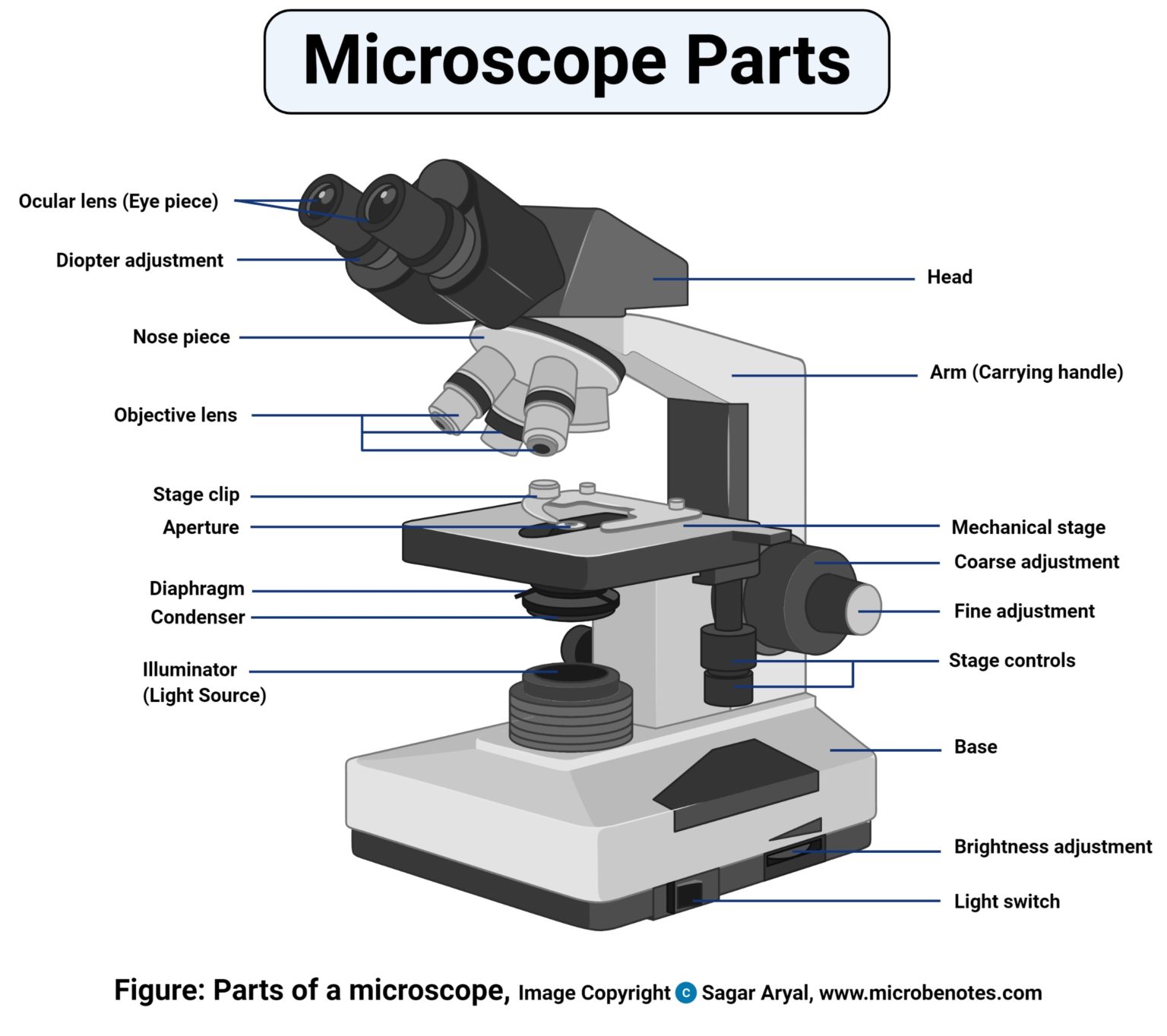
Parts of a microscope with functions and labeled diagram
ACTIVITY Microscope parts READ MORE MORE Use this interactive to identify and label the main parts of a microscope. Drag and drop the text labels onto the microscope diagram.
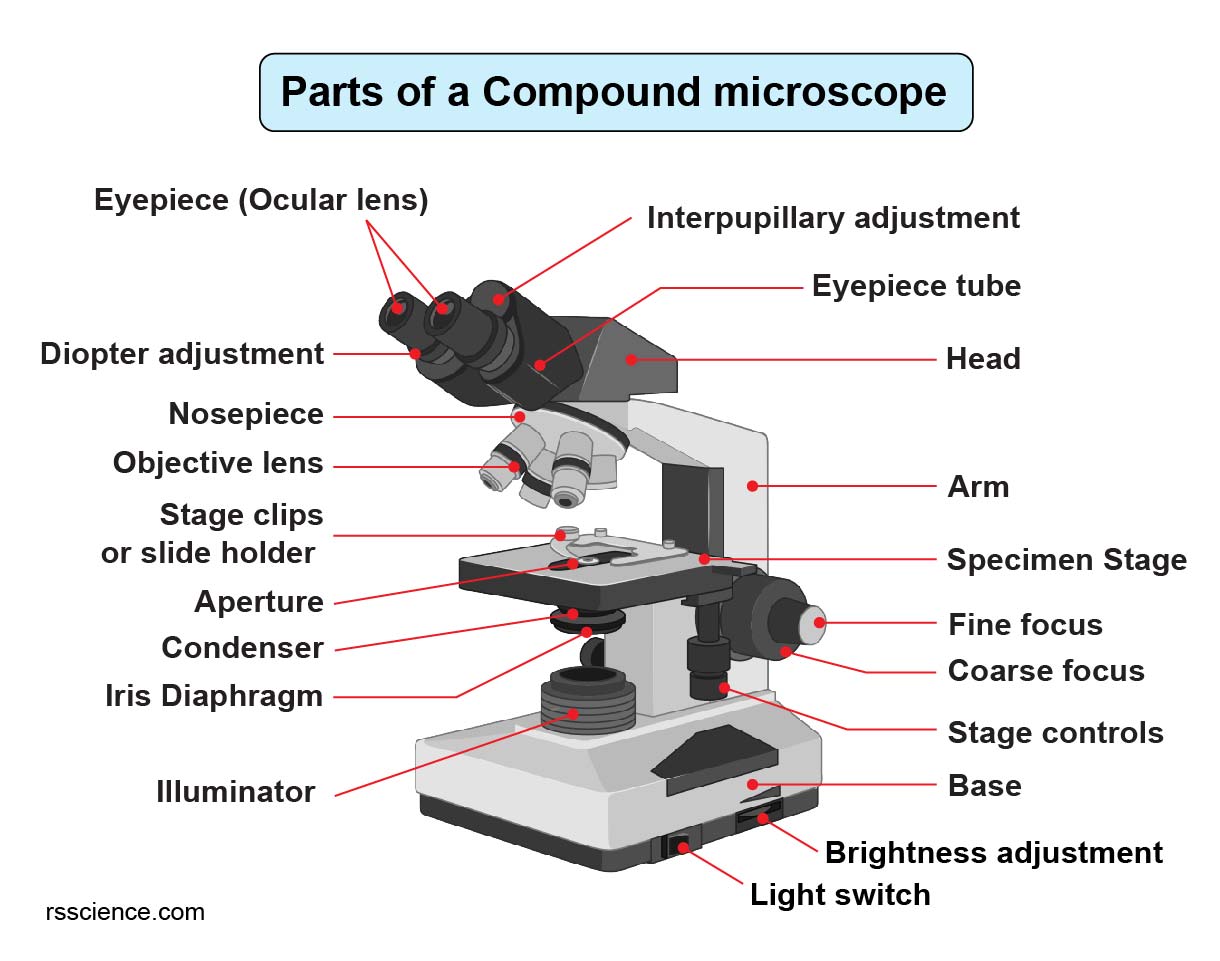
Compound Microscope Parts Labeled Diagram and their Functions Rs' Science
Parts Of a microscope. The main parts of a microscope that are easy to identify include: Head : The upper part of the microscope that houses the optical elements of the unit. Base: The base is attached to a frame (arm) that is connected to the head of the device. The base of the microscope provides stability to the device and allows the user.